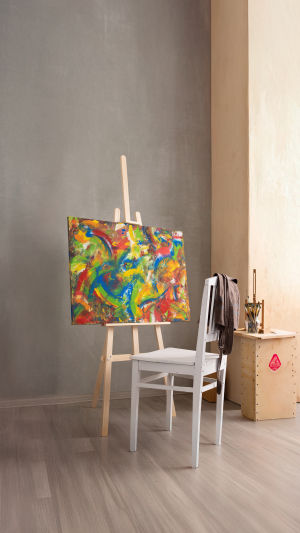For us, paintbrushes are more than tools—they are extensions of our hands and imagination. Each brush, from fine-tipped liners to wide, soft bristles, carries a unique personality and purpose.
The choice of brush shapes, sizes, and textures influences the marks we make, allowing us to express delicate details or broad, sweeping landscapes.
The moment we pick up a brush, it feels like holding a wand. The bristles respond to pressure, angle, and speed, transforming our intentions into color, texture, and emotion on the canvas. For oil painting, the quality of the brush is crucial: soft sable brushes glide smoothly for subtle blending, while stiffer hog bristles create bold, expressive textures. Understanding these nuances helps us communicate our vision with precision and freedom.
<h3>Preparing for the Painting Journey</h3>
Before any brush meets the canvas, preparation sets the stage for creativity. We start by choosing a linen or cotton canvas and securing it on an easel, making sure it’s taut and ready to receive paint. Then comes the selection of brushes.
Organizing them by size and shape feels like assembling a team of skilled musicians, each ready to contribute its unique sound to a symphony of color.
Cleaning brushes properly and keeping them hydrated with a bit of oil or water before use is another important step. It ensures smooth lines and preserves the longevity of each brush, so every painting session feels fresh and enjoyable.
<h3>Bringing Colors to Life</h3>
When the brush finally touches the canvas, the real magic begins. Thick, luscious oil paints flow from bristles to surface, turning simple lines into vibrant shapes and forms. Small detail brushes allow us to capture intricate petals or delicate highlights, while large flat brushes cover skies, water, or backgrounds in sweeping motions.
Mixing colors on the palette becomes a game of discovery. Combining titanium white with cadmium red might produce a soft peach glow, while ultramarine mixed with burnt sienna yields earthy, mysterious shades perfect for mountains or shadows. Brushes translate these experiments into visual storytelling, creating movement, depth, and mood in every gesture.
<h3>The Dance Between Brush and Canvas</h3>
Painting is a conversation between us, the brush, and the canvas. We adjust pressure, change angles, and vary speed to create different effects. A flick of the wrist can make leaves shimmer, and a gentle tap can form the soft texture of clouds.
Over time, we learn to listen to the brush—its bristles communicate resistance, flow, and responsiveness, guiding us toward the results we envision.
This immersive process encourages focus, patience, and mindfulness. As colors and textures layer, distractions fade. We are fully present in this partnership with our tools, allowing creativity and emotion to flow naturally.
<h3>Finishing and Appreciating the Work</h3>
After hours of blending, layering, and refining, the painting is complete. Stepping back, we admire how each brushstroke contributes to a larger story. Every detail, every color choice, reflects our mood, attention, and creative decisions.
The painting becomes not only a visual piece but also a record of the experience itself—our journey through colors, textures, and imagination.
Keeping brushes clean and in good condition after finishing ensures they are ready for the next adventure. Each brush carries memories of past creations, ready to help us explore new ideas in oil painting.
<h3>Why We Love Brushes</h3>
Brushes are more than simple tools; they are gateways to expression, creativity, and joy. Each session reminds us that with the right brush, patience, and imagination, we can turn a blank canvas into a world of color and emotion. Lykkers, next time you see a paintbrush, remember—it's not just bristles and handles.
It's a companion in our artistic journey, inviting us to explore, play, and create magic one movement at a time.
A Simple Beginners Guide To Oil Painting
Video by Paint Coach





